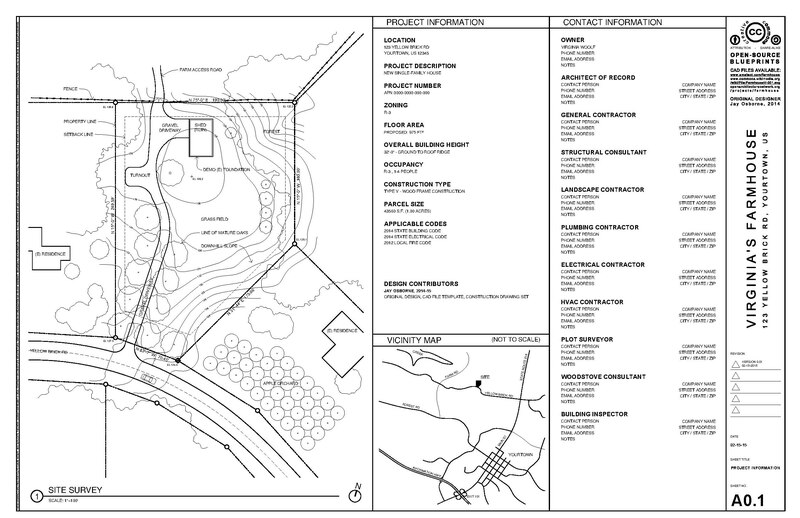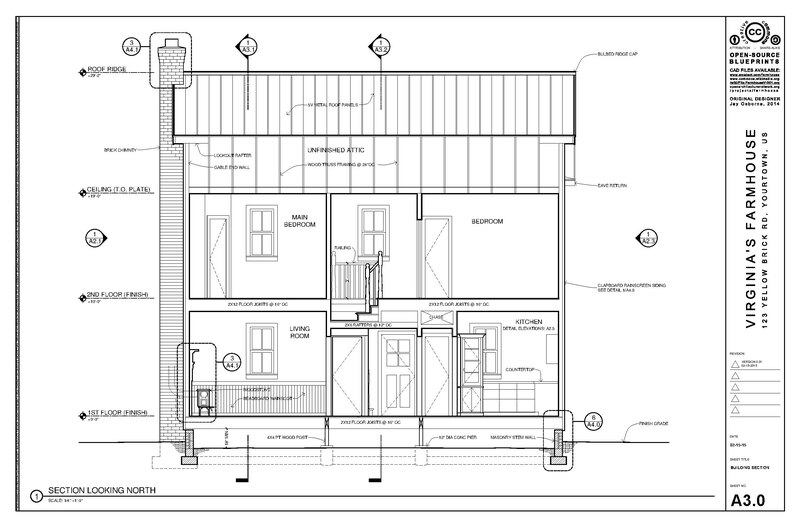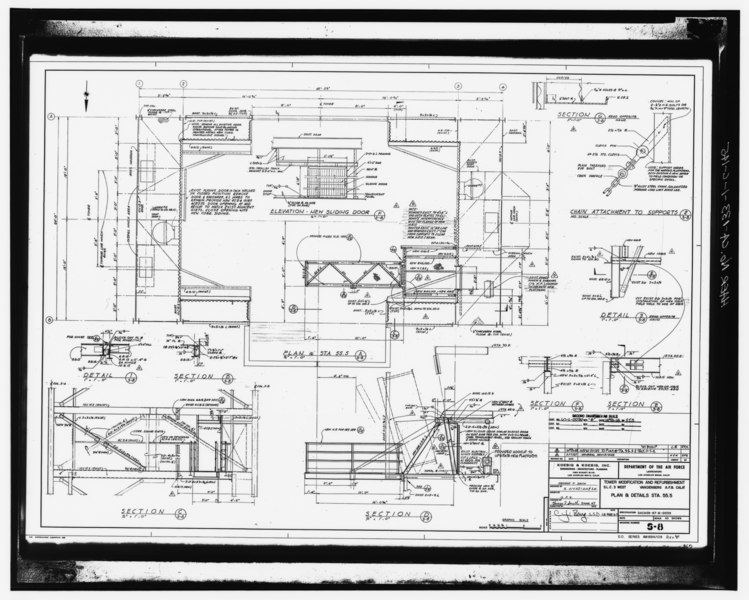Construction projects come in all shapes and sizes, but all must be monitored closely. This is why a project has many construction documents. Building a structure is a complicated job and every aspect of it requires construction drawings to plan on paper before the build begins.
The importance of construction documents and drawings in construction project management cannot be understated. They set up the project for success by detailing everything from the site to the design and even the project administration. But what exactly are construction documents and what types of construction drawings are there?
What Are Construction Documents?
Construction documents help project managers streamline the process of planning, scheduling and tracking construction projects. There isn’t only one type of construction document and they come in many types. Construction documents can be written, graphical and pictorial.
ProjectManager is construction project management software with unlimited file storage. Our software can be accessed in the office, on the job site and even remotely so everyone on the project can share the construction documents and drawings from one centralized hub. If you need to make changes, everyone is updated to keep them on the same page. Get started with ProjectManager today for free.

In a sense, construction documents are like puzzle pieces that make up a bigger picture of the project’s design, location and physical characteristics. You can’t pull building permits without the right documents, and you can’t legally build anything without permits. This gives you an idea of the importance of construction documents.
Construction Documents
Here are some of the main documents that are created throughout the construction phases. While each of these documents serves a different purpose, they all contribute to one common goal, which is to facilitate the construction project management process.
Creating these documents can be challenging, so we’ve created free construction project management templates to help you with this process.
1. Construction Plan
A construction plan is a thorough construction document that describes all the planning details of a construction project, such as its scope of work, budget, schedule and work breakdown structure, among other important components.
2. Construction Budget
A construction budget is a document that outlines all the costs of a construction project. The main purpose of a construction budget is to help construction project managers control spending as construction projects are executed to ensure the costs won’t be exceeded and the project will be profitable.
In addition, a construction budget should include a construction contingency fund to cover unexpected expenses such as the cost of responding to project risks.

3. Construction Schedule
A construction schedule is a document that coordinates the activities that take place over the execution phase of a construction project. The main purpose of a construction schedule is to ensure that everyone involved in the project such as contractors and subcontractors understands the due dates for their deliverables so the project can be completed on time.

Using construction scheduling software like ProjectManager helps create a detailed construction schedule and track the progress of your project in real time. ProjectManager is equipped with tools like Gantt charts, task lists, project calendars and project dashboards that allow you to monitor each activity in your construction schedule.

Get your free
Construction Schedule Template
Use this free Construction Schedule Template to manage your projects better.
Get the template
4. Construction Estimate
A construction estimate is a document that includes the direct, indirect and overhead costs of a construction project such as materials, labor and equipment rental. The construction estimate is the preliminary version of a construction budget.

Creating a construction estimate is a complex process that can be overwhelming without the right tools. That’s why it’s advisable to use construction estimating software, which helps you map the different costs of your project.
5. Scope of Work
The scope of work is a document that describes the work that will be performed in a construction project, including the estimated timeline, deliverables, costs and payment terms. It’s a critical construction document often used during the construction bidding process or as part of construction contracts.

6. Construction Proposal or Construction Bid
A construction proposal or bid is the document that contractors use to apply for construction contracts. It explains how a contractor would execute a project, including details such as the project timeline, costs, scope of work, specifications and more. Contractors typically submit this document to project owners after receiving a request for proposal (RFP) from them.

7. Punch List
A punch list is a construction form that lists any tasks that need to be completed before the construction phase can be considered complete. These are usually non-critical tasks such as doing paint touch-ups, cleaning debris or replacing defective equipment.

8. Request for Proposal (RFP)
A request for proposal (RFP) is a document that’s used to initiate the construction bidding process, as it allows owners to solicit project proposals from contractors interested in building their project. Besides this, RFPs help owners specify the details they’d like to know about the contractors’ proposals, such as their scope of work, timeline, costs and more.

9. Request for Information (RFI)
In many cases, important construction documents such as the scope of work might have omissions or mistakes such as missing tasks or unclear specifications. In these cases, you may submit a request for information (RFI) document to the project owner, architect, engineer or construction project manager to get more information on a particular matter.

10. Construction Lien Waiver
A construction lien is a legal claim that protects construction firms, contractors and subcontractors in scenarios where project owners aren’t willing to pay for the construction work they’ve performed.
On the other hand, a construction lien waiver is a document that’s exchanged between project owners and contractors once the project has been completed and the corresponding payment has been made. A lien waiver is a legal document by which a contractor gives up the right to file a construction lien.

11. Request for Quote (RFQ)
A request for quote (RFQ) is a document that’s often used in construction when contacting a supplier of goods or services such as construction materials to estimate how much project resources will cost. The vendor will then reply with a quote that will be valid for a limited time, as material prices fluctuate over time. Then, after reviewing multiple quotes and finding the best vendor for your project, you may send a purchase order and continue with the procurement process.

12. Construction Submittals
A construction submittal is a document that’s created by subcontractors and sent to general contractors, construction project managers, design teams or architects so they can approve the materials, equipment and processes that the subcontractor intends to use to execute their construction work.
Construction submittals help ensure all the construction work subcontractors are performing is aligned with the specifications outlined in construction contracts.
13. Construction Change Order
A construction change order is used whenever the initial construction plan needs to be adjusted. There’s a wide variety of reasons why this might happen. For example, project owners might add extra work to the construction plan during the execution phase. This means the initial scope of work needs to be expanded and more materials, labor and equipment are needed.

14. Bill of Quantities
A bill of quantities is an important construction planning document that describes the quantity and quality of materials that will be required to complete a construction project, along with the labor requirements. This construction form allows contractors to estimate construction costs and prepare their construction bids accordingly.

15. Schematic Design
A schematic design is a construction drawing that provides an idea of the construction project layout, how the construction site fits with its surroundings, what the actual measurements of the building will be like and whether building codes and other regulations are met. Schematic designs are created during the schematic design phase, which is one of the steps in the architectural design process.
16. Construction Specifications
Construction specifications describe the guidelines for the scope of work, materials and quality of workmanship for the activities that make up a construction project. They provide additional information that should be used with construction drawings to ensure the project is completed within the standards set by the owner and the construction design team.
The design team makes construction specifications and project owners approve them before the construction company or general contractor executes the work.
17. Construction Daily Report
A construction daily report is a document that lists the work that occurred during a day on the construction site, along with other details such as the material and equipment inventories, incidents, weather conditions and any other information that might be relevant to the construction site manager, construction project manager or general contractor.

18. Material Takeoff
A material takeoff (MTO) is a construction form that itemizes the needed materials for a construction project and describes the required quantities based on all the available construction drawings and documents. The main purpose of a material takeoff is to accurately estimate the costs of those materials.
19. Schedule of Values
A schedule of values is a construction project management document that allows contractors and subcontractors to report the work they’ve completed so far and the materials they’ve spent to the project owner. It also indicates the total labor and material costs needed to complete the project. It facilitates the payment process as it allows both parties to clearly understand what’s being paid for and what’s next.

20. Construction Timesheet
Construction timesheets are documents that help construction project managers, site supervisors, crew managers and other professionals keep track of the time construction workers spend on the job site performing project tasks. It allows them to calculate their pay based on the hours they’ve worked and their hourly rate.

21. Contractor Payment Schedule
In construction, a contractor payment schedule is a form that allows you to keep track of the payments that you’ve made to all the contractors you’ve hired for the execution of work. This document is ideal for general contractors, who usually have to hire multiple specialized subcontractors to help them with various areas of their construction projects.

Construction Drawings
The term construction drawings refers to all the architectural documentation that guides the construction phase of a project. Architectural drawings are very detailed and cover everything from codes, safety plans and sustainability standards to plumbing, mechanical and electrical systems.
There are many types of architectural drawings and for this reason, different countries have developed their nomenclature standards. In the United States, the preferred method of construction drawings nomenclature is the US National CAD standard, which was developed through a group effort from the American Institute of Architects (AIA), the Construction Specifications Institute and the National Institute of Building Sciences.
Here’s a quick overview of some architectural drawings, as defined by the US National CAD standard.
1. A0 Sheets
A0 sheets, also known as project information, have a cover sheet that summarizes the project information such as names, contact information, property details, zone use, building type, city PIN, site map, regulations, etc.

Source: Amatect, CC BY-SA 3.0, via Wikimedia Commons
There’s also the accessibility notes and details sheet which includes door width and sizes and location of signage among other things (though not included for residential projects). The site plan shows the building as it sits on the property, landscaping, concrete work and exit safety requirements. A more detailed landscape plan is sometimes included.
2. A1 Sheets
A1 sheets are floor plans that show where every building element will be located and include detailed dimensions for these elements. There are also keynotes, door, window and wall type tags as well as other call-outs.

Source: Amatect, CC BY-SA 3.0, via Wikimedia Commons
3. A2 Sheets
A2 sheets deal with elevations and sections. Elevations are the flat image of the outside faces of buildings. They show the height of the existing and new building elements as well as the materials that’ll be used or persevered from existing elements. Some keynotes add other important information about the construction of the exterior.
 Source: Amatect, CC BY-SA 3.0, via Wikimedia Commons
Source: Amatect, CC BY-SA 3.0, via Wikimedia Commons
4. A3 Sheets
A3 drawings or section drawings are cut-section drawings through the center of the building. They show wall and foundation construction, floor-to-floor heights and the height relationships between the inside and the ground plane outside.

Source: Amatect, CC BY-SA 3.0, via Wikimedia Commons
5. A4 Sheets
A4 sheets are enlarged plans or large-scale views. The main one is the reflected ceiling plan which shows the view up to the ceiling rather than down to the floor. These include ceiling material types such as drywall, plaster, wood cladding, etc. They often include the light switch locations to control the ceiling-mounted lights.
In residential construction projects, there’s also a power plan that locates the outlets and data points for cable TV or internet access. It shows the power location for appliances and personal devices. Larger projects have these details noted in the electrical plans.
The enlarged plans also include what materials will be applied to the walls and floors. This is done with finished tags that refer to a finish schedule (details further down the list) which show manufacturer, product names and other qualities.
6. A5 Sheets
A5 sheets are about details. They show the types of walls, built-in furniture, where the power outlets will be, lights and switches as well as the height of different elements. These differ from residential and commercial spaces, but both need interior elevations charted.
7. A6 Sheets
A6 sheets are schedules. Schedule in this case means a spreadsheet rather than a timeline. They’re used to keep track of various detailed product information concerning finishes, types, sizes and so forth.
8. S Sheets
S sheets are structural drawings, which are standard throughout the building. The drawings are done by a licensed structural engineer and show the plan for each level, such as concrete footing, steel and wood framing and where and what size they will be, as well as any other structural details.

9. M Sheets
M sheets are the mechanical drawings for the project, such as the electrical and plumbing systems. They’re usually delivered by the engineer who provided the S sheets. These drawings show where the electrical and plumbing systems will go and what sizes they’ll be, including ductwork and types of air handling systems used.
10. P Sheets
P sheets are plumbing drawings that detail the pipe sizes that will be used in the system for both waste and potable water. There are also locations of vent risers to release sewage air out of the building safely.
11. E Sheets
E sheets are directed towards details in the electrical drawings. They have locations of outlets for all power in the building, including the switches that control them. They detail what type of wiring is required and the boxes to handle the electrical equipment.
ProjectManager Helps Manage Construction Documentation
As you can see, those are many documents to manage. Project management software can help you organize these documents and make them accessible to those who need them during the execution of the project. ProjectManager has unlimited file storage and is online, offering everyone access to the files they need whenever and wherever they work. But our construction project management software is more than a document organizer.
Use Multiple Project Views
The ability to share files is great, but if you can’t execute that work, you’re going to have to seek out other tools. That makes things complicated. We keep it simple. Our multiple project views mean that construction project managers can plan on Gantt charts, designers can visualize workflow on kanban boards, crews can check off tasks on our list view and stakeholders can make sure milestones are met on the calendar view.

Connect Everyone On the Project
Other problems occur if everyone is working on construction documents in a silo. If teams can’t collaborate effectively, issues will arise that result in delays and extra costs. Our online software takes care of that. As noted, files can be shared and users can comment on tasks and tag anyone in the project to bring them into the conversation as needed. Emails notify users of changes to the plan or comments, but there are also in-app alerts so you don’t have to leave the tool.

Our software is a great construction project management tool that is a centralized hub for your construction documents and drawings, but we also give you features that help you plan, monitor and report on the project. Get a high-level view with our real-time dashboard to keep on track. Then use customized reports to keep your stakeholders updated. We’ll help you manage expectations and deliver success.
ProjectManager is award-winning software that organizes and stores all your construction documents and construction drawings. Our collaborative platform connects everyone on the project team and lets them work with the tools they want. Plan, monitor and report on every aspect of the construction project. Get started with ProjectManager today for free.

